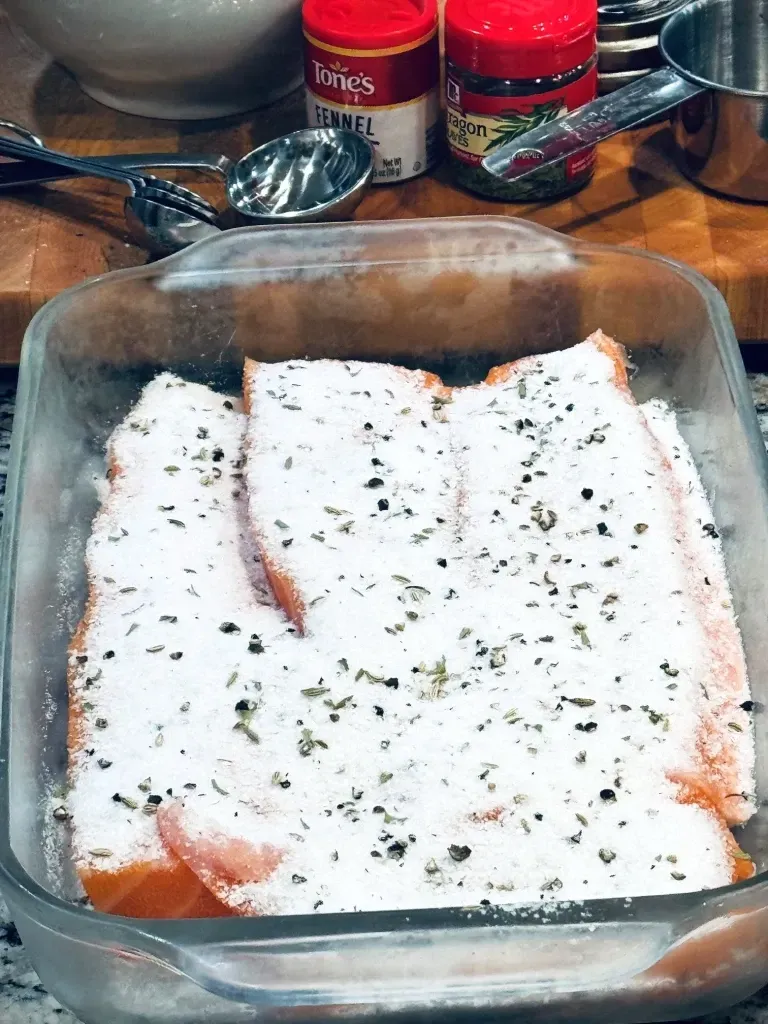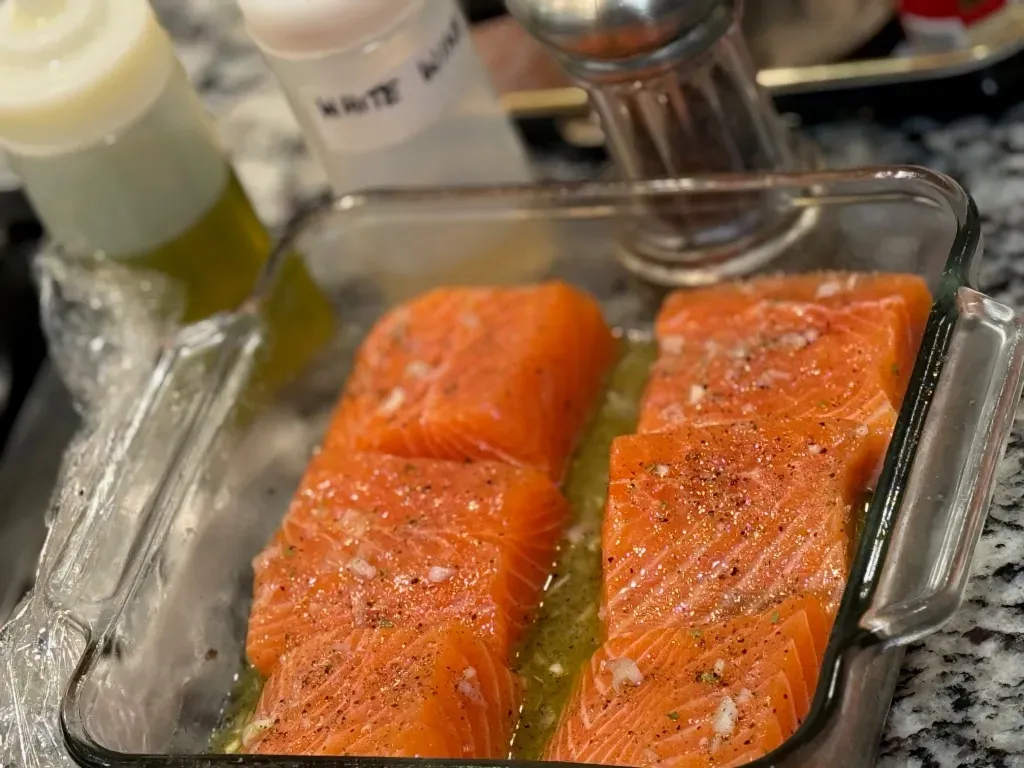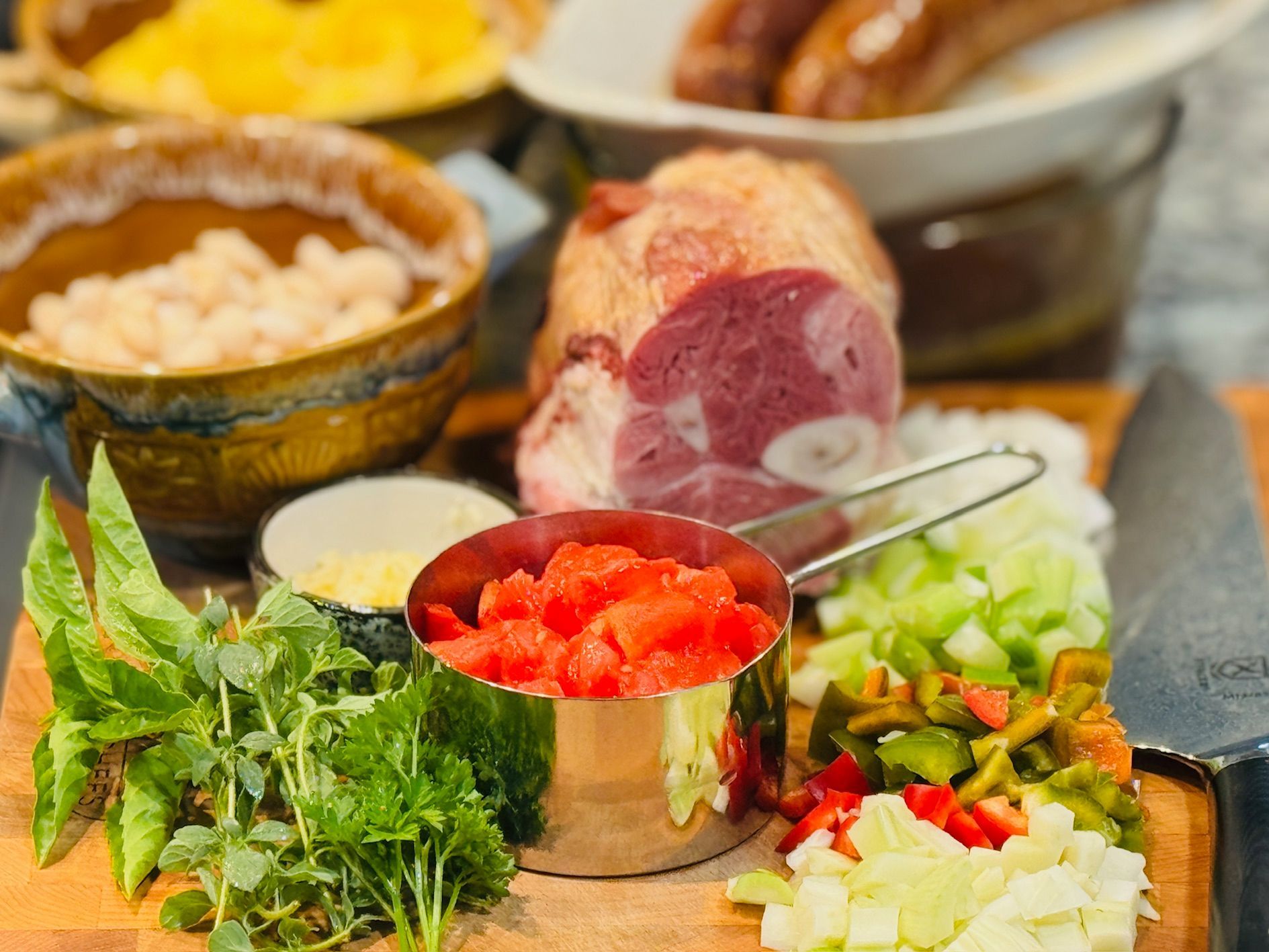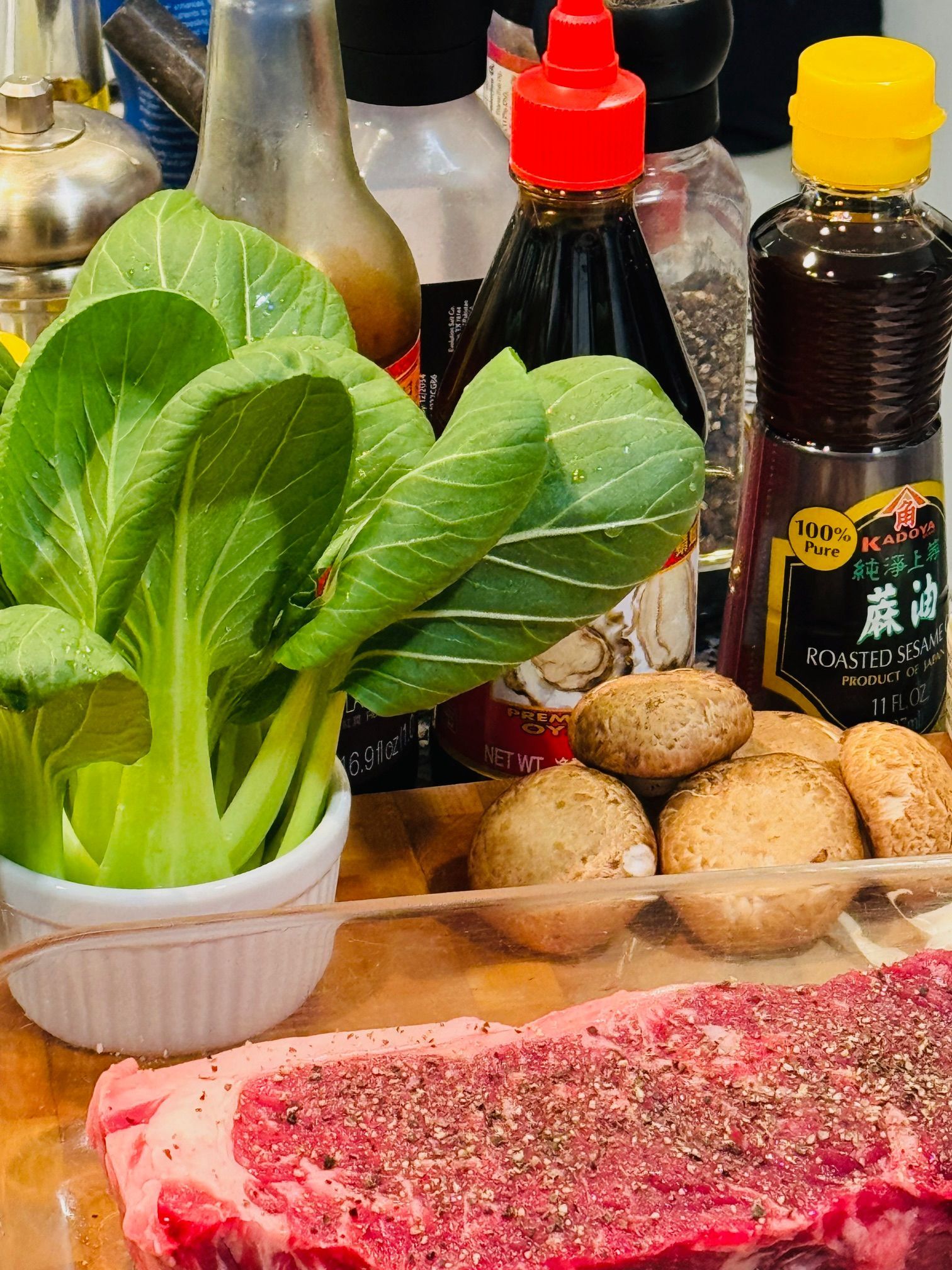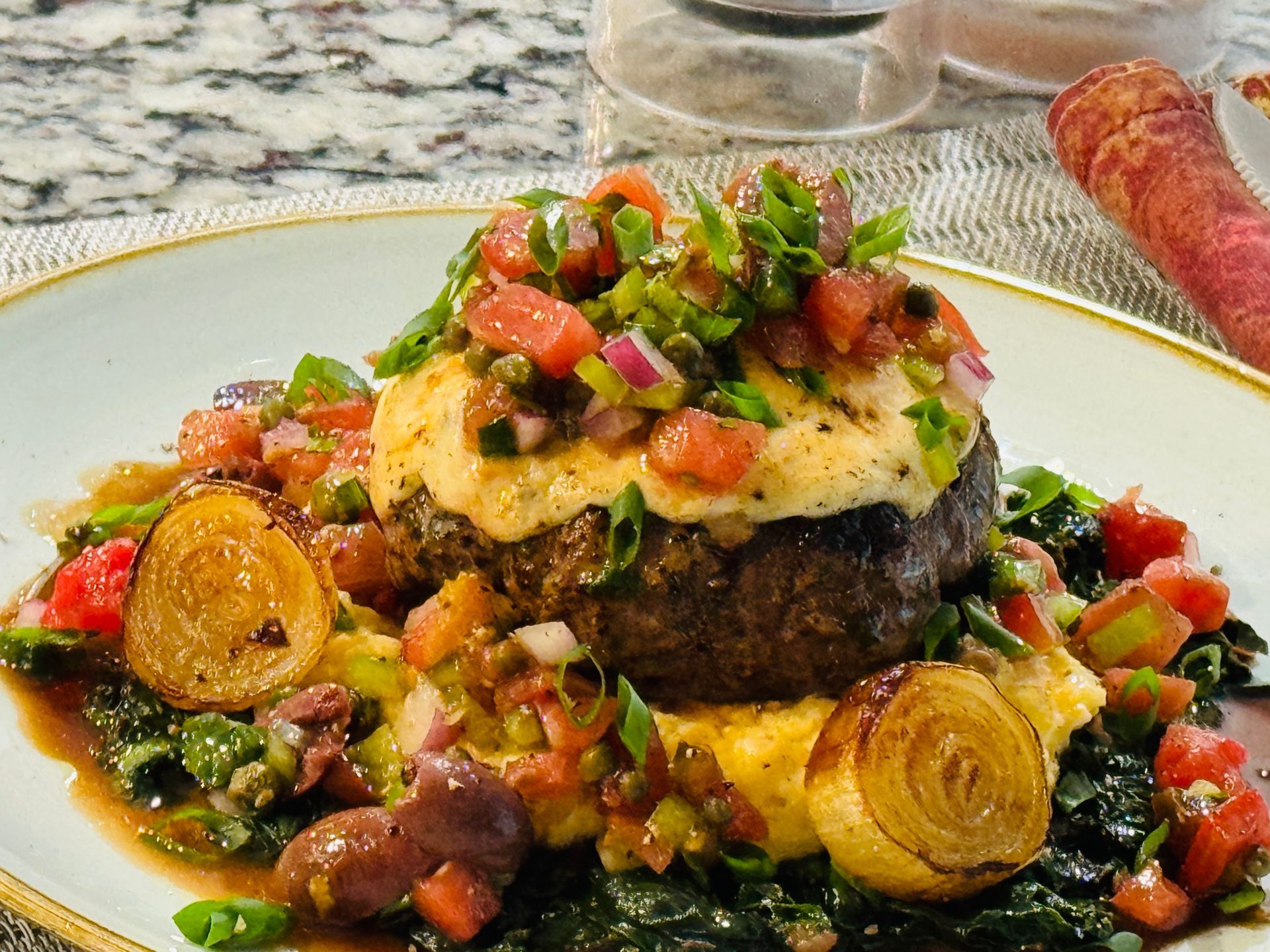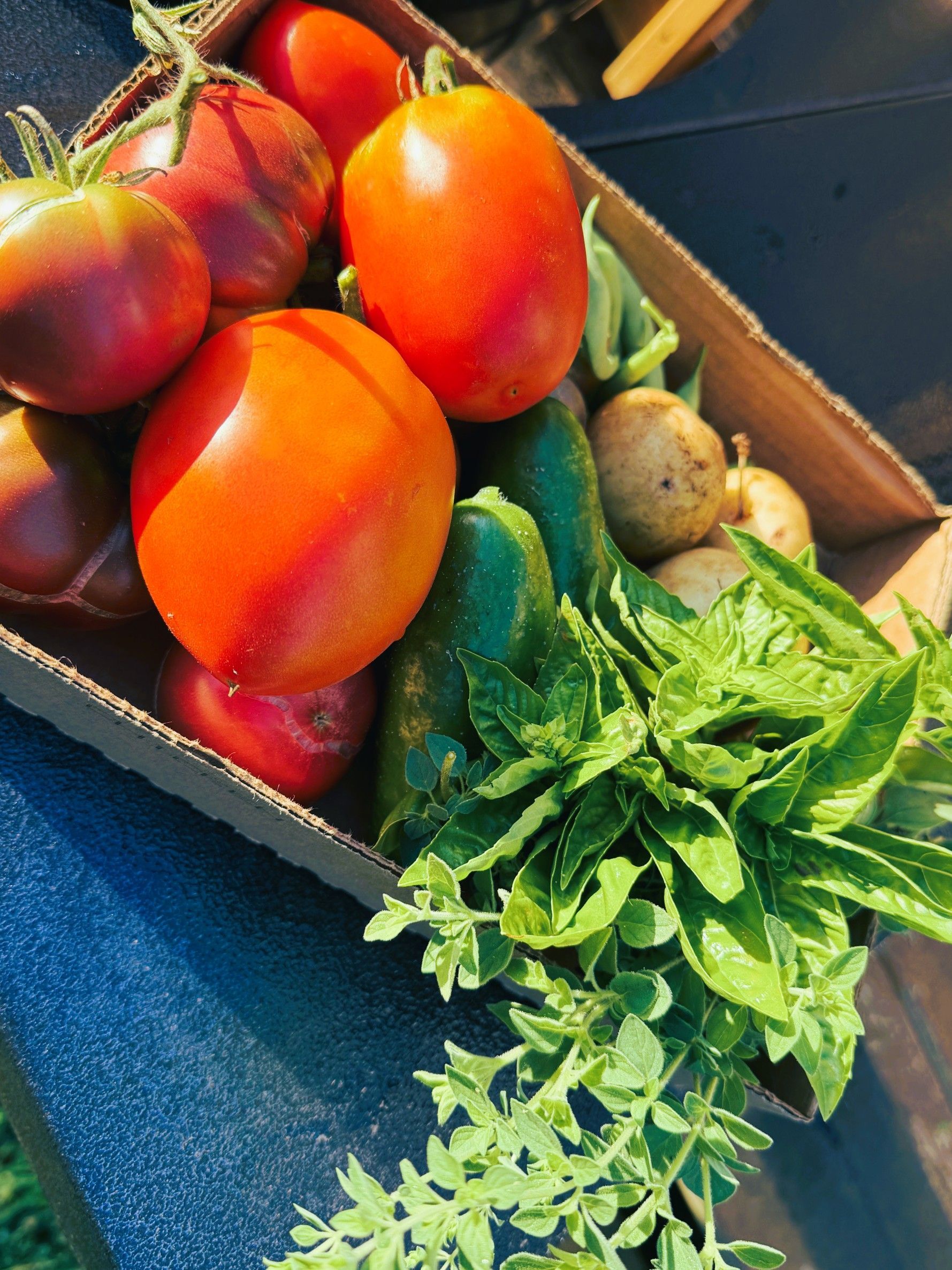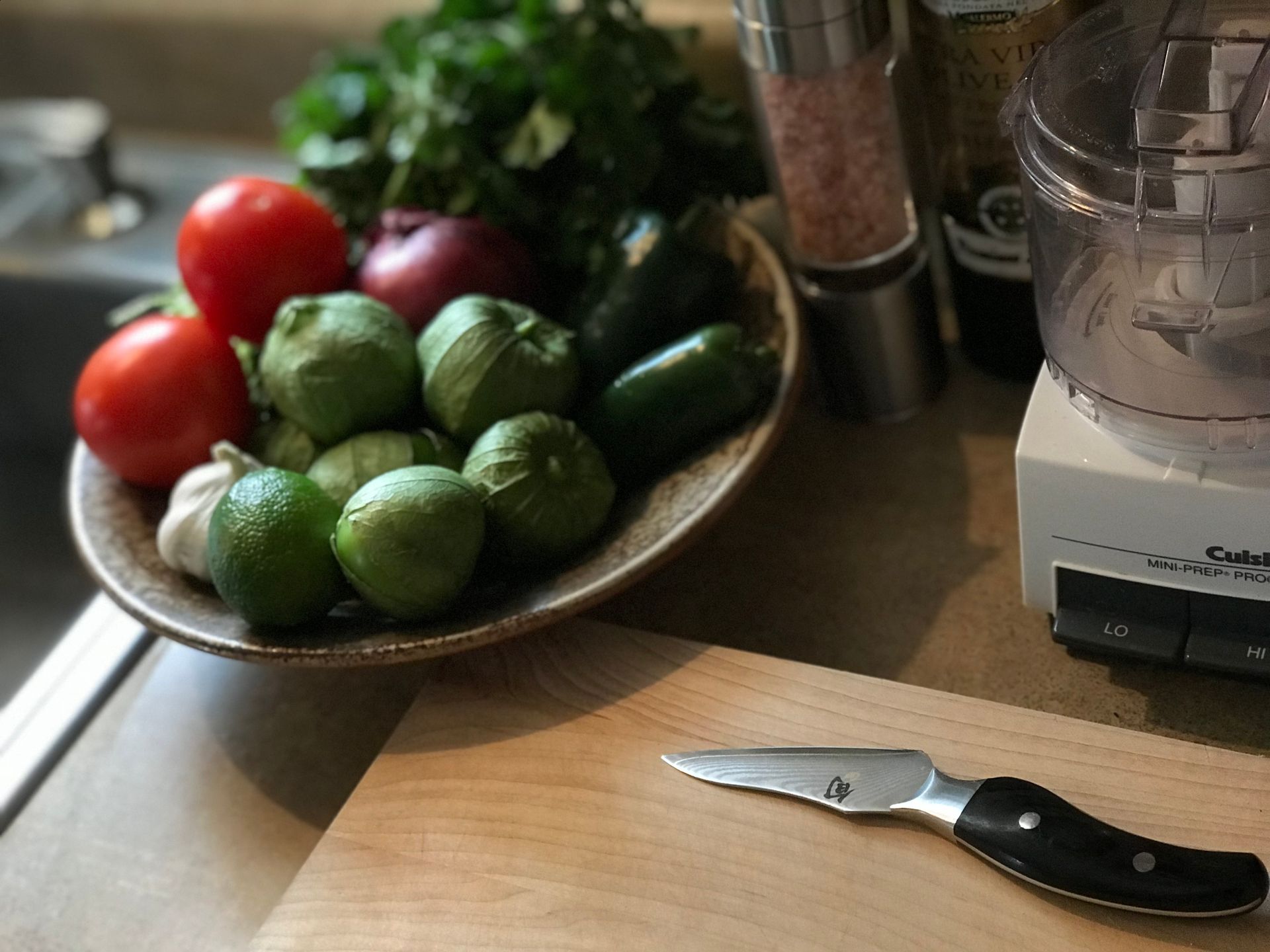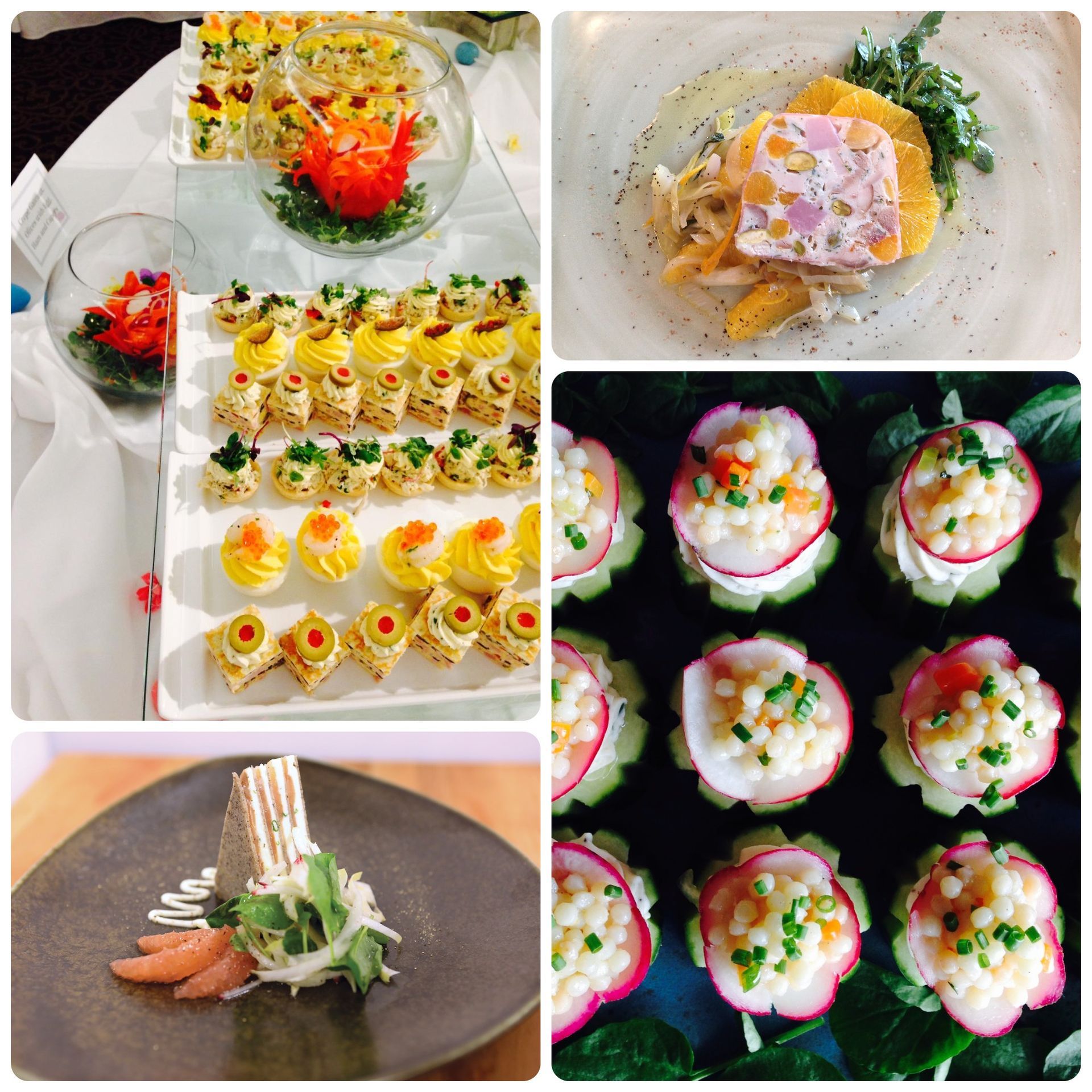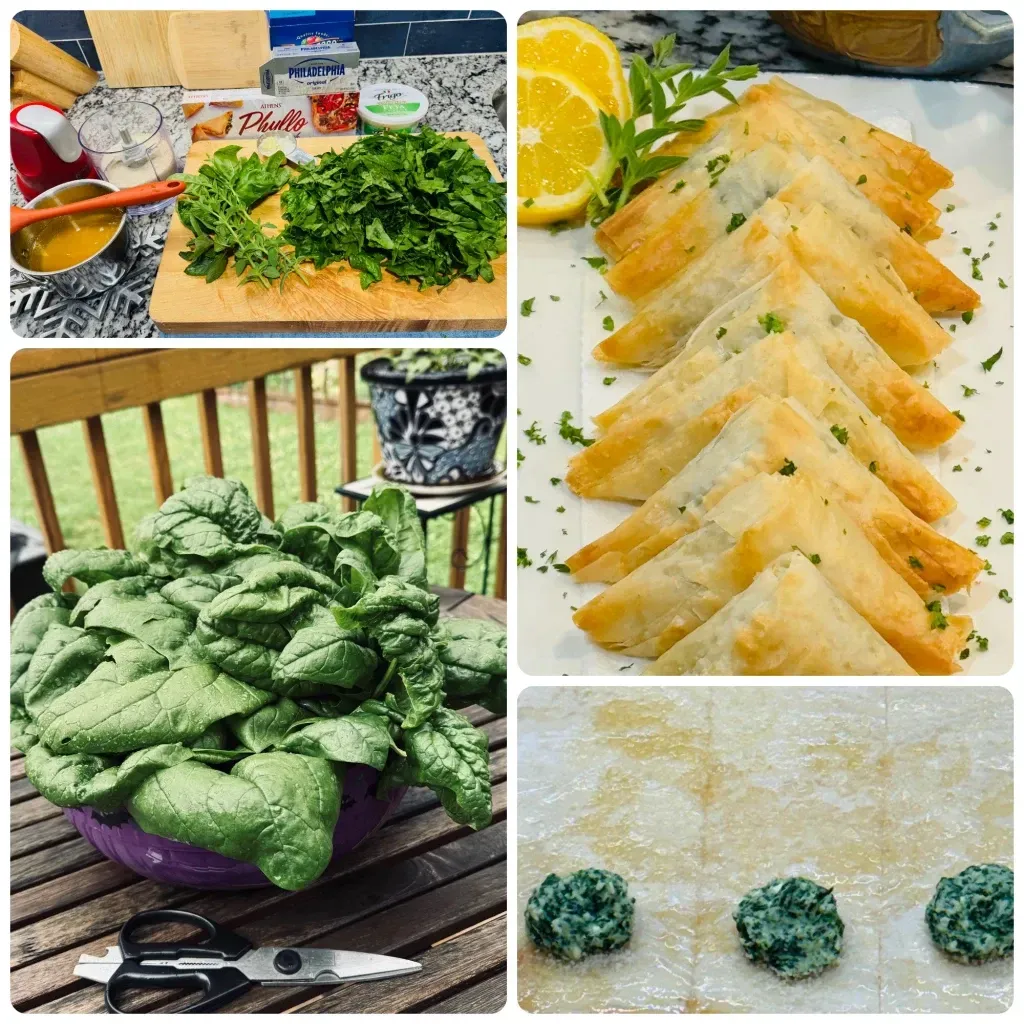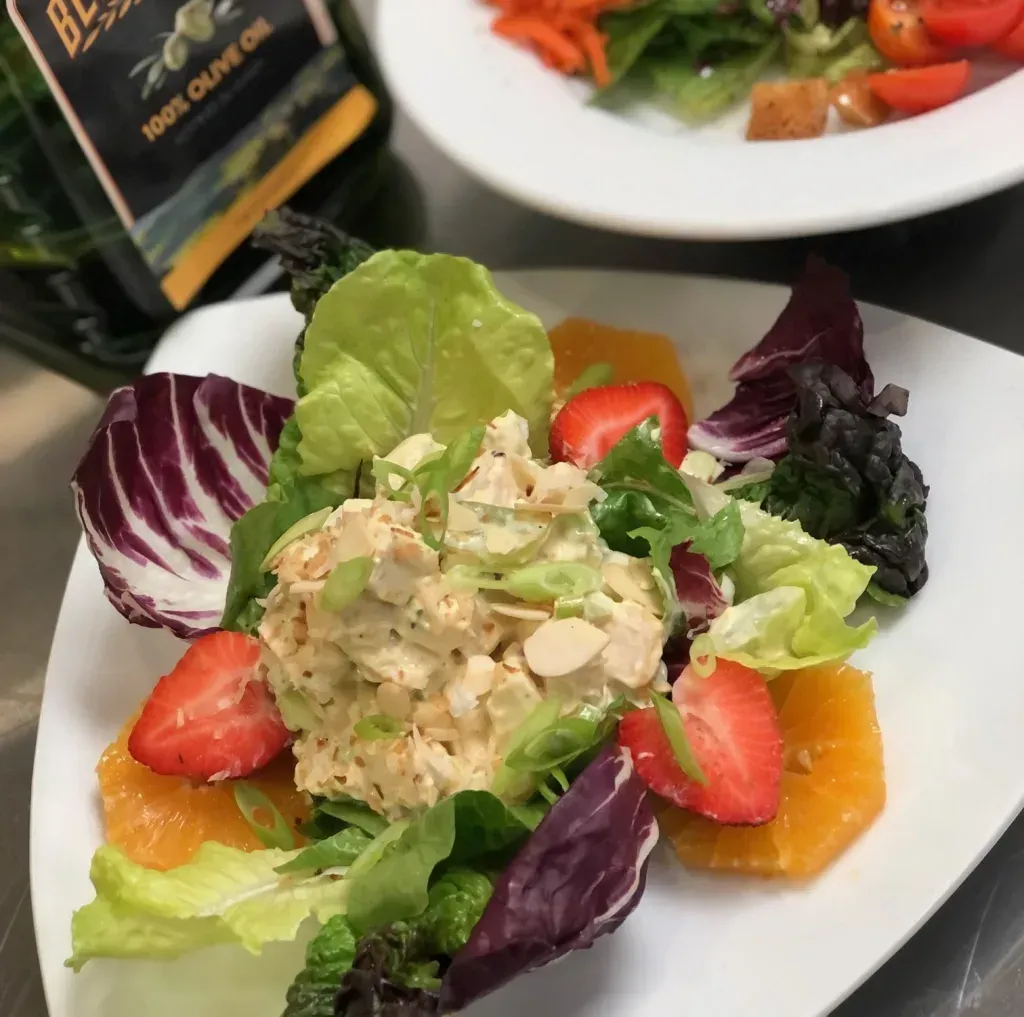Cooking Salmon at Home for the Holidays
Butchering, Chef cooking tips, cooking, Seafood
Cooking Salmon at Home for the Holidays
Salmon is perhaps the most popular fish in the US! When I told my friend Chris Perkins, who is a fishmonger and owner of Express Foods here in Springfield Missouri, that I wanted to demonstrate how to break down a whole salmon and show some various ways to cook it, he graciously gifted me this…
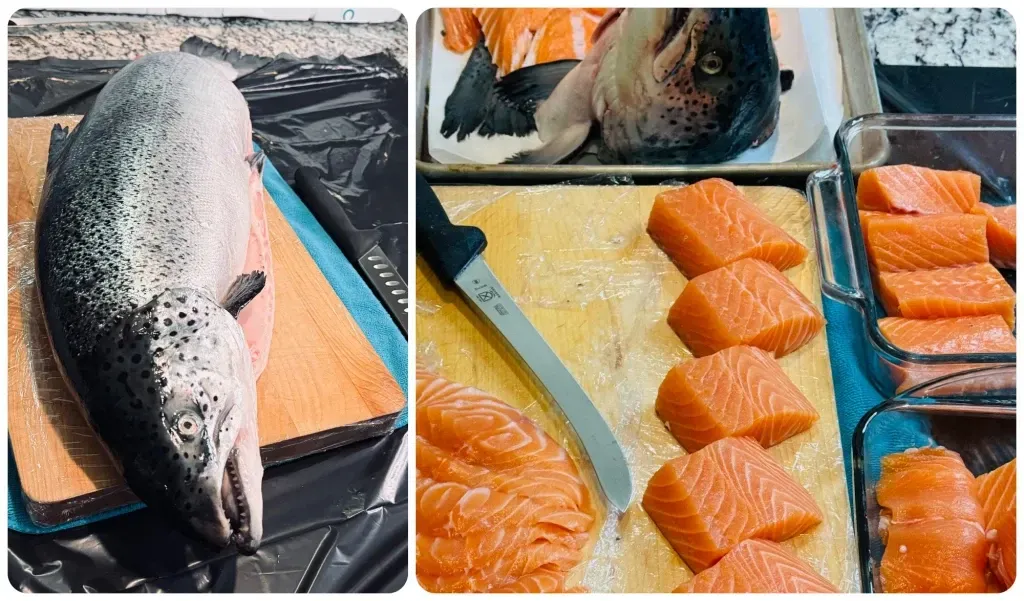
Salmon is perhaps the most popular fish in the US! When I told my friend Chris Perkins, who is a fishmonger and owner of Express Foods here in Springfield Missouri, that I wanted to demonstrate how to break down a whole salmon and show some various ways to cook it, he graciously gifted me this beautiful Norwegian farm-raised salmon to use in this post. For more information about them go to:
https://www.expressfoods.net/ Here is how I do it and the reasons why many chefs choose to purchase whole fish versus fillets.


Break down the whole fish in 6 steps:
1) Using a large butcher knife, cut down to the spine, under the pectoral fin, close to the collar then cut off the first filet all the way to the tail, in a smooth sawing motion.
2) Turn the fish over and repeat.
3) Trim off the rib bones by the belly.
4) Remove the pin bones with a pair of tweezers or needle nose plyers.
5) Trim off the belly and use it for smoking or cooking separately.
6) Skin the fish with a long sharp flexible fish knife. Then repeat these steps with the other filet.
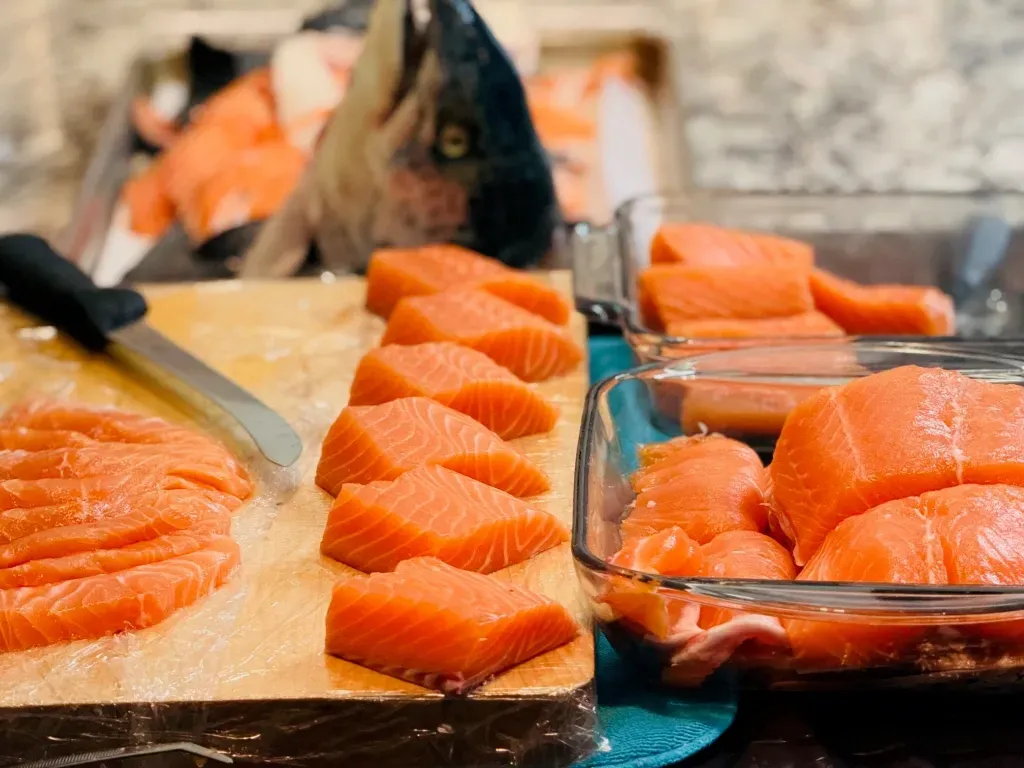
The whole fish is broken down and fabricated into various portion cuts for use in this post.
Chefs often choose to purchase whole fish instead of filets for several reasons. One is that it is easier to discern how fresh the fish is by the clearness of the eyes, firm flesh, and red gills with minimal if any fishy odor. Additionally, whole fish stays fresh longer than filets (always store covered with ice). Furthermore, just like whole animal carcasses many different parts of the fish can be used from the flesh to the bones for fish stock (fumet) in selected species. Lastly purchasing whole fish will ensure that the seafood that arrives is the correct species that the chef ordered. This is not always the case when buying filets that can not always be so easily identified as the whole fish would be.
Salmon Sates
Yield 12 sates
12 each 1-ounce thin slices of raw salmon 4”x 1”
Glaze
½ cup Sweet Thai Chili Sauce
1 Tablespoon Fish Sauce (Soy sauce can also be used)
1 Tablespoon Lime Juice
1 Tablespoon Sesame Oil
½ teaspoon Ginger minced fine
Garnish (As needed)
Chopped Roasted Peanuts- Optional
Black and White Sesame Seeds
Chopped Cilantro
- Mix all of the glaze ingredients together
- Separate into 2 bowls
- Brush salmon sates on both sides with one of the bowls of the glaze
- Reserve the other bowl to brush the sates after they are cooked
- Sear off the sates in a very hot cast iron skillet (or grill over hot charcoals)
- Place onto an oiled baking pan and bake at 375F until cooked through
- Remove from the oven and brush with the reserved glaze
- Garnish with chopped peanuts, sesame seeds, and cilantro.
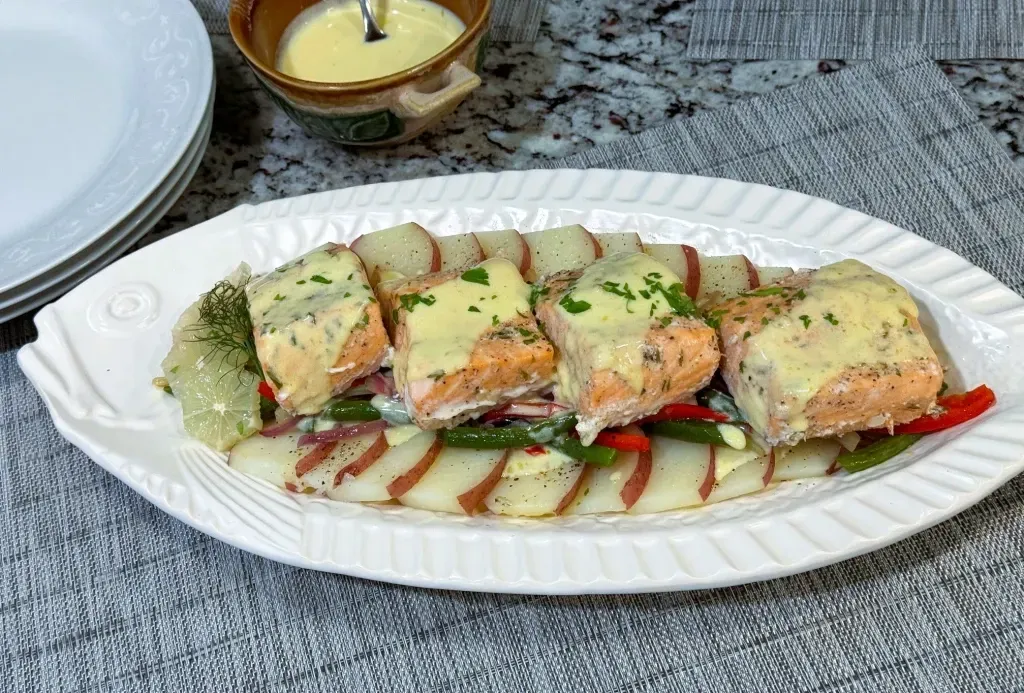
Oven shallow poached salmon. Served with a Buerre Blanc Sauce made from the poaching liquid. Plated on my mother’s antique fish platter with red potatoes, green beans, fennel, red onions, and red bell peppers.
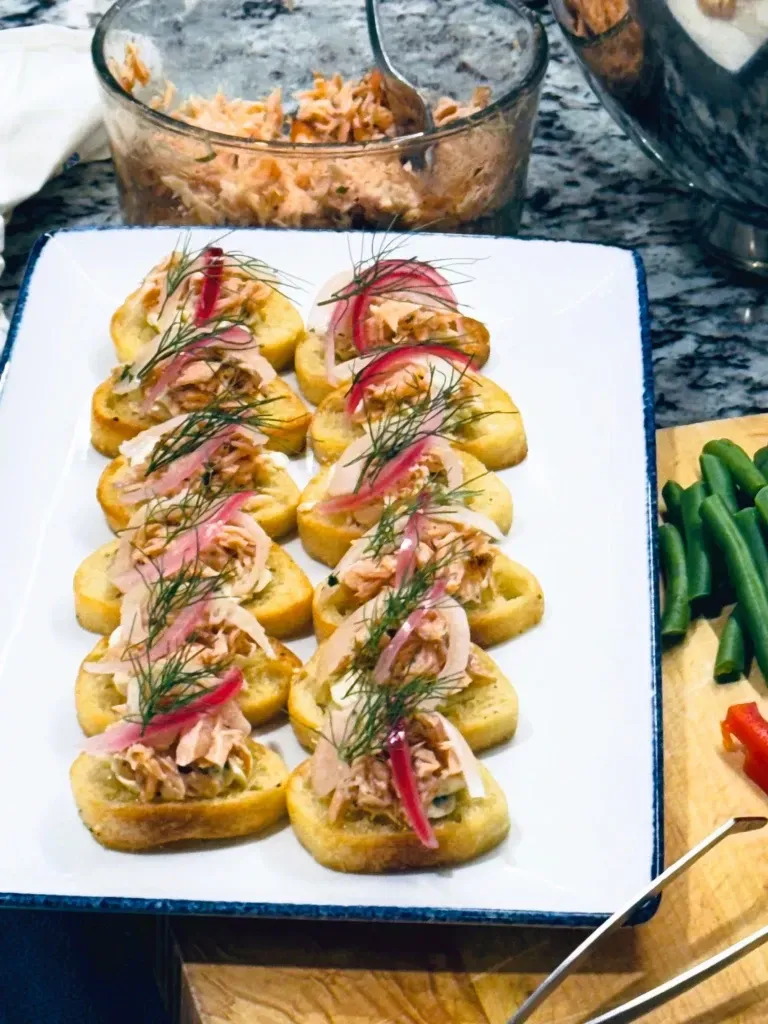
Cured smoked salmon belly, shredded and served on croustades with garlic herb canape butter, quick pickled fennel, and red onions.
Hot Smoked Salmon
Prepare the salmon curing salt, cure the salmon bellies then hot smoke, and use for croustades, salad, salmon cakes, or any other purposes. See the image above in the gallery.
Salmon cure
Yield 1 cup
½ cup Kosher salt
½ cup Granulated Sugar
2 tsp Cracked pepper
1 tsp Fennel Seed
½ tsp Tarragon or dill
- Mix all together and spread over salmon
- Refrigerate for 4 hours or overnight
- Wash off the salt/sugar cure, dry then brush with whisky
- Season with black pepper and tarragon or dill
- Refrigerate for 2 to 4 hours uncovered
- Hot smoke over indirect coals and wood chips
- Once cooked brush with olive oil
- Remove the meat from the skin along with any fins or bones
- Shred the meat and serve on croustades or reserve it for other uses.
Farm-raised or wild Salmon is one type of fish that all good cooks need to know how to prepare. I hope this post will encourage you to cook more fish for your friends and family to enjoy in the new year and beyond.


